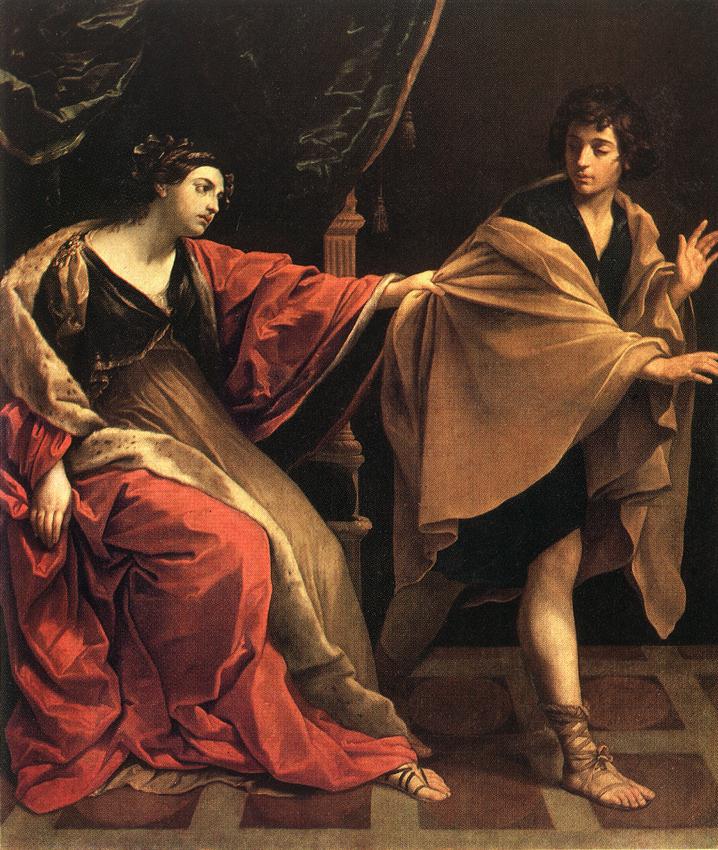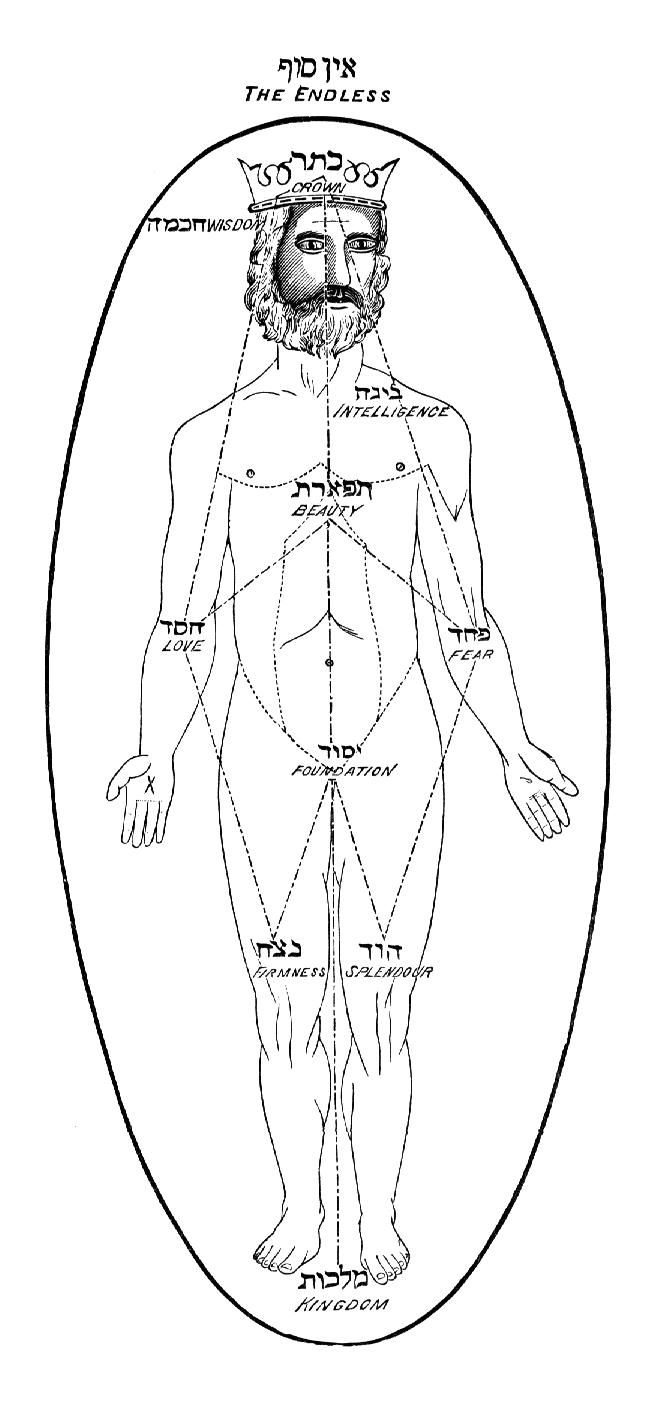|
Daat (Kabbalah)
In the branch of Jewish mysticism known as Kabbalah, Daʻat or Da'ath (, in pausa: ', ) is the location (the mystical state) where all ten ''sefirot'' in the Tree of Life are united as one. In Daʻat, all ''sefirot'' exist in their perfected state of infinite sharing. The three sefirot of the left column that would receive and conceal the Divine light, instead share and reveal it. Since all sefirot radiate infinitely self-giving Divine Light, it is no longer possible to distinguish one ''sefira'' from another; thus they are one. Daʻat is not always depicted in representations of the ''sefirot''; and could be abstractly considered an "empty slot" into which the germ of any other sefirot can be placed. Properly, the Divine Light is always shining, but not all humans can see it. The revelation or the concealment of the Divine Light shining through Daʻat does not happen only in Daʻat itself. It can appear by a human perspective also within the worldly affairs (Malkuth). The ... [...More Info...] [...Related Items...] OR: [Wikipedia] [Google] [Baidu] |
Dååth
Dååth is an American heavy metal band from Atlanta. Their music incorporates styles such as death metal, industrial metal, and some traces of gypsy jazz. History Dååth was started by Eyal Levi and Mike Kameron, who had been playing in bands since they were in middle school. The two friends attended Berklee College of Music in Boston but eventually left school to concentrate full-time on making money. The band was originally known as Dirt Nap before the name change in 2004. Dååth's first album, '' Futility'', was self-released in 2004. Their Roadrunner Records debut, '' The Hinderers'', was released in March 2007. Dååth have so far released two music videos from '' The Hinderers'', the first being "Festival Mass Soulform", which was created prior to getting signed, and helped them gain Roadrunner's interest. The second video, "Subterfuge", was released in February 2007. In March 2007, Dååth was confirmed to play the second stage (rotating slots) at Ozzfest. On Oc ... [...More Info...] [...Related Items...] OR: [Wikipedia] [Google] [Baidu] |
Yichud
In Jewish religious law (''halakha''), the laws of ''yichud'' ( he, איסור ייחוד ''issur yichud'', ''prohibition of seclusion'') prohibit seclusion in a private area of a man and a woman who are not married to each other. Such seclusion is prohibited out of fear that sexual intercourse or other, lesser acts may occur. A person who is present in order to prevent ''yichud'' is called a shomer. The laws of ''yichud'' are typically followed in strict Orthodox Judaism. Adherents of Conservative and Reform Judaism do not generally abide by the laws of ''yichud''. The term ''"yichud"'' also refers to a ritual during an Ashkenazi Jewish wedding in which the newly married couple spends a period secluded in a room by themselves. In earlier historical periods, as early as the talmudic era, the couple would have sexual intercourse at this time, but that practice is no longer current. Source of the prohibition Deuteronomy 13:7 says: If your very own brother, or your son or d ... [...More Info...] [...Related Items...] OR: [Wikipedia] [Google] [Baidu] |
Intellect
In the study of the human mind, intellect refers to, describes, and identifies the ability of the human mind to reach correct conclusions about what is true and what is false in reality; and how to solve problems. Derived from the Ancient Greek philosophy term ''nous'', ''intellect'' derived from the Latin ''intelligere'' (“to understand”), from which derives the term ''intelligence'' in the French and English languages. The discussion of intellect is in two areas of knowledge that concern the relation between intelligence and intellect. * In classical philosophy and in medieval philosophy the intellect (''nous'') is the subject of the question: How do people know things? In Late Antiquity and in the Middle Ages, the intellect was the conceptual means of reconciling the religious faith of monotheism with the facts of philosophy and science about Nature, a reconciliation that would make the intellect the conduit between the human soul, and the divine intellect of the cosmos ... [...More Info...] [...Related Items...] OR: [Wikipedia] [Google] [Baidu] |
Da'as Elyon And Da'as Tachton
Daas/Daat Elyon ("Higher Knowledge") and Daas/Daat Tachton ("Lower Knowledge") are two alternative levels of perception of reality in Hasidic thought. Their terms derive from the Kabbalistic sephirot: Keter (above conscious ''Will'') and Da'at (conscious ''Knowledge''), considered two levels of the same unifying principle; the first encompassing, the second internalised within the person. In Kabbalah either Keter or Da'at are listed in the 10 sephirot, but not both. While the significance of this duality is limited in Kabbalah to its discussion of the Heavenly realms, the significance, and the terminology of "Higher" and "Lower Knowledge" emerges in the Hasidic internalisation of Kabbalah to describe alternative, paradoxical conscious perceptions of Divine Panentheism in this material World. ''Upper Knowledge'' refers to the Divine view "from Above", ''Lower Knowledge'' to the Created view "from Below". Description The terms ''Daas Elyon'' and ''Tachton'' are used particularly in ... [...More Info...] [...Related Items...] OR: [Wikipedia] [Google] [Baidu] |
Binah (Kabbalah)
Binah (meaning "understanding"; ''Bīnā''), is the third '' sephira'' on the kabbalistic Tree of Life. It sits on the level below Keter (in the formulations that include that ''sephirah''), across from Chokhmah and directly above Gevurah. It is usually given four paths: from Keter, Chokhmah, to Gevurah and Tiphereth. Binah is associated with the color black. Description According to the Bahir: "The third (utterance): quarry of the Torah, treasury of wisdom, quarry of God's spirit, hewn out by the spirit of God. This teaches that God hewed out all the letters of the Torah, engraving them with the Spirit, casting His forms within it". Binah is 'intuitive understanding', or 'contemplation'. It is likened to a 'palace of mirrors' that reflects the pure point of light of Chokhmah, wisdom, increasing and multiplying it in an infinite variety of ways. In this sense, it is the 'quarry', which is carved out by the light of wisdom. It is the womb, which gives shape to the Spirit of Go ... [...More Info...] [...Related Items...] OR: [Wikipedia] [Google] [Baidu] |
Consciousness
Consciousness, at its simplest, is sentience and awareness of internal and external existence. However, the lack of definitions has led to millennia of analyses, explanations and debates by philosophers, theologians, linguisticians, and scientists. Opinions differ about what exactly needs to be studied or even considered consciousness. In some explanations, it is synonymous with the mind, and at other times, an aspect of mind. In the past, it was one's "inner life", the world of introspection, of private thought, imagination and volition. Today, it often includes any kind of cognition, experience, feeling or perception. It may be awareness, awareness of awareness, or self-awareness either continuously changing or not. The disparate range of research, notions and speculations raises a curiosity about whether the right questions are being asked. Examples of the range of descriptions, definitions or explanations are: simple wakefulness, one's sense of selfhood or sou ... [...More Info...] [...Related Items...] OR: [Wikipedia] [Google] [Baidu] |
Sensory Processing
Sensory processing is the process that organizes sensation from one's own body and the environment, thus making it possible to use the body effectively within the environment. Specifically, it deals with how the brain processes multiple sensory modality inputs, such as proprioception, vision, auditory system, tactile, olfactory, vestibular system, interoception, and taste into usable functional outputs. It has been believed for some time that inputs from different sensory organs are processed in different areas in the brain. The communication within and among these specialized areas of the brain is known as functional integration. Newer research has shown that these different regions of the brain may not be solely responsible for only one sensory modality, but could use multiple inputs to perceive what the body senses about its environment. Multisensory integration is necessary for almost every activity that we perform because the combination of multiple sensory inputs is essentia ... [...More Info...] [...Related Items...] OR: [Wikipedia] [Google] [Baidu] |
Recall (memory)
Recall in memory refers to the mental process of retrieval of information from the past. Along with encoding and storage, it is one of the three core processes of memory. There are three main types of recall: free recall, cued recall and serial recall. Psychologists test these forms of recall as a way to study the memory processes of humansrecall. (2010). In Encyclopædia Britannica. Retrieved March 04, 2010, from Encyclopædia Britannica Online: http://www.britannica.com/EBchecked/topic/493353/recal/ref> and animals. Two main theories of the process of recall are the two-stage theory and the theory of Encoding specificity principle, encoding specificity. Theories Two-stage theory The ''two-stage theory'' states that the process of recall begins with a search and retrieval process, and then a decision or recognition process where the correct information is chosen from what has been retrieved. In this theory, recognition only involves the latter of these two stages, or processes, ... [...More Info...] [...Related Items...] OR: [Wikipedia] [Google] [Baidu] |
Torah
The Torah (; hbo, ''Tōrā'', "Instruction", "Teaching" or "Law") is the compilation of the first five books of the Hebrew Bible, namely the books of Genesis, Exodus, Leviticus, Numbers and Deuteronomy. In that sense, Torah means the same as Pentateuch or the Five Books of Moses. It is also known in the Jewish tradition as the Written Torah (, ). If meant for liturgic purposes, it takes the form of a Torah scroll ('' Sefer Torah''). If in bound book form, it is called ''Chumash'', and is usually printed with the rabbinic commentaries (). At times, however, the word ''Torah'' can also be used as a synonym for the whole of the Hebrew Bible or Tanakh, in which sense it includes not only the first five, but all 24 books of the Hebrew Bible. Finally, Torah can even mean the totality of Jewish teaching, culture, and practice, whether derived from biblical texts or later rabbinic writings. The latter is often known as the Oral Torah. Representing the core of the Jewish spiri ... [...More Info...] [...Related Items...] OR: [Wikipedia] [Google] [Baidu] |
Adam Kadmon
In Kabbalah, Adam Kadmon (, ''ʾāḏām qaḏmōn'', "Primordial Man") also called Adam Elyon (, ''ʾāḏām ʿelyōn'', "Most High Man"), or Adam Ila'ah (, ''ʾāḏām ʿīllāʾā'' "Supreme Man"), sometimes abbreviated as A"K (, ''ʾA.Q.''), is the first of Four Worlds that came into being after the contraction of God's infinite light. ''Adam Kadmon'' is not the same as the physical ''Adam Ha-Rishon''. In Lurianic Kabbalah, the description of ''Adam Kadmon'' is anthropomorphic. Nonetheless, ''Adam Kadmon'' is divine light without vessels, i.e., pure potential. In the human psyche, ''Adam Kadmon'' corresponds to the yechidah, the collective essence of the soul. In Judaism Philo The first to use the expression "original man," or "heavenly man," was Philo, in whose view the , or , "as being born in the image of God, has no participation in any corruptible or earthlike essence; whereas the earthly man is made of loose material, called a lump of clay." The heavenly man, ... [...More Info...] [...Related Items...] OR: [Wikipedia] [Google] [Baidu] |




